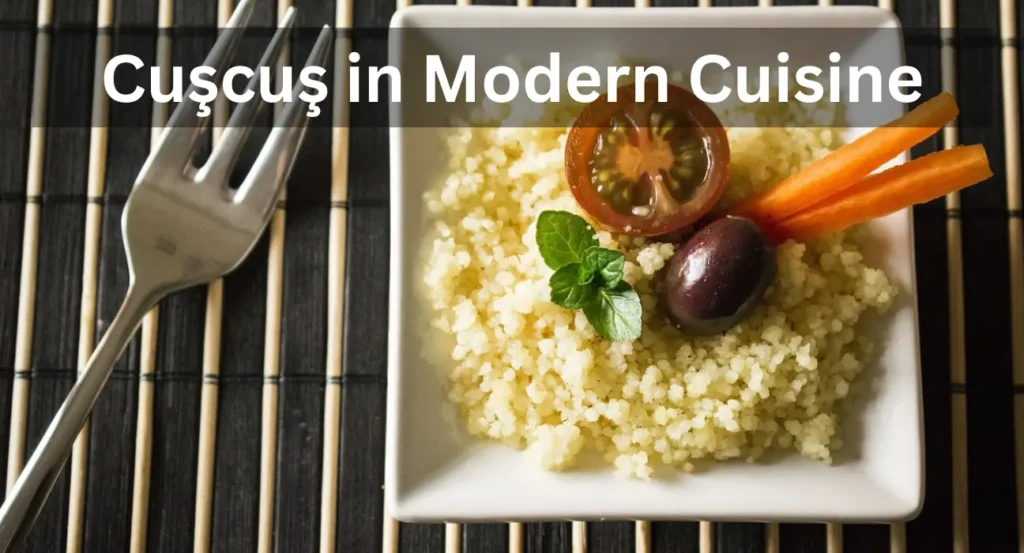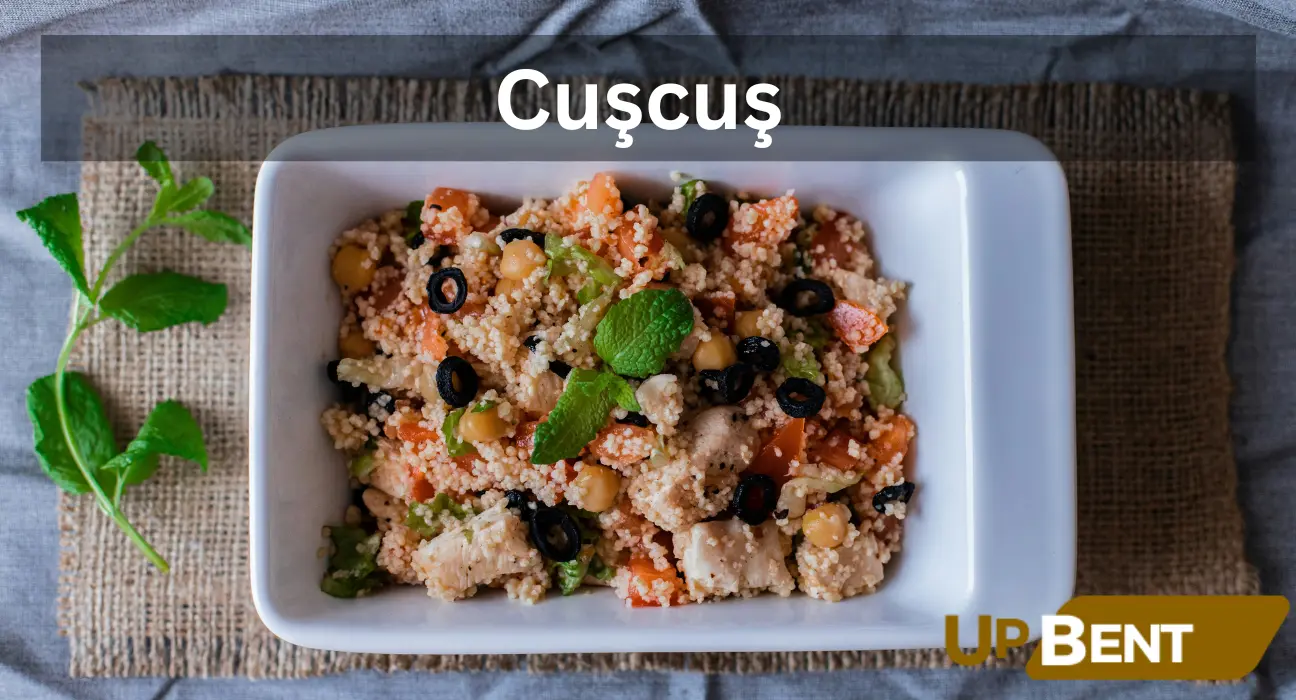Cuşcuş, a staple in North African cuisine, is a versatile and nutritious dish made from steamed semolina wheat granules. Originating from the Berber people, it has gained worldwide popularity due to its simplicity and adaptability. This article delves into the nutritional benefits, types, cooking methods, and various recipes of cuşcuş, providing a thorough understanding of this beloved dish.
Nutritional Benefits of Cuşcuş
Cuşcuş is not only delicious but also packed with nutrients. It is a good source of carbohydrates, providing energy for daily activities. It also contains protein, fiber, and essential vitamins and minerals.
- Macronutrient Profile: High in carbohydrates and a decent source of protein.
- Vitamins and Minerals: Contains selenium, manganese, and a small amount of B vitamins.
- Health Benefits: Promotes digestive health due to its fiber content and supports overall well-being with its array of nutrients.
The Origins of Cuşcuş
Cuşcuş, a staple in North African cuisine, has a rich and diverse history that dates back centuries. Originating from the Berber people of North Africa, specifically the regions that are now Morocco, Algeria, Tunisia, and Libya, cuşcuş has been a fundamental part of their diet for thousands of years. The Berbers, indigenous to North Africa, developed cuşcuş as a way to utilize the abundant semolina wheat in their environment. This versatile dish quickly became a dietary cornerstone due to its ease of preparation and nutritional value.
Historical Significance
Throughout history, cuşcuş has held significant importance beyond just a source of nutrition. In ancient times, it was considered a symbol of abundance and prosperity, often featured in feasts and celebrations. During the medieval period, cuşcuş spread to other parts of the Mediterranean and even into Europe through trade routes and conquests. This spread was facilitated by the Arab traders and conquerors who adopted the dish and introduced it to the regions they traveled to.
Cultural Importance
In contemporary times, cuşcuş remains an integral part of the cultural heritage of many North African countries. It is often prepared for family gatherings, religious festivals, and other significant events. In Morocco, for instance, it is customary to prepare for Friday prayers, serving it as a communal dish that brings families and communities together. The act of preparing and sharing is seen as a way to strengthen social bonds and uphold cultural traditions.
Types of Cuşcuş
There are several types of cuşcuş, each with unique characteristics and uses in various cuisines.
- Traditional : Small, fine granules commonly used in Moroccan dishes.
- Israeli (Pearl) : Larger, pearl-like granules that are often toasted, giving them a nutty flavor.
- Lebanese : The largest of the three, also known as Moghrabieh.
- Whole Wheat : A healthier alternative made from whole wheat flour, offering more fiber and nutrients.
How to Cook Cuşcuş
Cooking of the dish is straightforward, but a few tips can help you achieve the perfect texture.
- Basic Cooking Method:
- Boil water and add a pinch of salt.
- Pour over and cover the bowl.
- Let it steam for about 5 minutes, then fluff with a fork.
- Cooking Tips and Tricks: Use broth instead of water for added flavor, and add a knob of butter or olive oil for a richer taste.
- Common Mistakes to Avoid: Avoid overcooking, as cuşcuş can become mushy. Also, do not skip the fluffing step to prevent clumping.
Delicious Cuşcuş Recipes
Cuşcuş can be the star of various dishes, from salads to main courses.
Read more About : Mangasusu
Cuşcuş Salad with Fresh Vegetables
A refreshing and healthy option, perfect for a light meal.
Ingredients:
- Cuşcuş
- Cherry tomatoes
- Cucumber
- Red onion
- Fresh herbs (parsley, mint)
- Lemon juice
- Olive oil
Instructions:
- Prepare cuşcuş as per basic method.
- Chop vegetables and herbs.
- Mix all ingredients and dress with lemon juice and olive oil.
Moroccan Cuşcuş with Lamb
An authentic dish full of rich flavors.
Ingredients:
- Cuşcuş
- Lamb
- Carrots, zucchini, chickpeas
- Spices (cumin, coriander, cinnamon)
- Dried fruits (apricots, raisins)
Instructions:
- Cook lamb with spices until tender.
- Add vegetables and dried fruits.
- Serve over steamed cuşcuş.
Vegetarian Cuşcuş with Roasted Vegetables
A hearty and nutritious meal.
Ingredients:
- Cuşcuş
- Bell peppers, eggplant, zucchini
- Olive oil
- Garlic, thyme, rosemary
Instructions:
- Roast vegetables with olive oil and herbs.
- Mix with prepared cuşcuş.
Cuşcuş with Chicken and Herbs
A simple yet flavorful dish.
Ingredients:
- Cuşcuş
- Chicken breasts
- Fresh herbs (thyme, parsley)
- Lemon zest
- Olive oil
Instructions:
- Cook chicken and slice.
- Mix with cuşcuş, herbs, and lemon zest.
Sweet Cuşcuş with Dried Fruits and Nuts
A delightful dessert or breakfast option.
Ingredients:
- Cuşcuş
- Dried fruits (dates, apricots)
- Nuts (almonds, pistachios)
- Honey
- Cinnamon
Instructions:
- Prepare with a bit of honey and cinnamon.
- Mix with chopped dried fruits and nuts.
Cuşcuş as a Side Dish
Cuşcuş can be a versatile side dish that complements many main courses.
- Pairing with Main Courses: Goes well with grilled meats, stews, and roasted vegetables.
- Base for Bowls: Create nutritious bowls with a variety of toppings like avocado, chickpeas, and feta cheese.
- Creative Uses in Meals: Use in place of rice or pasta in many dishes.
Cuşcuş in Different Cuisines
Cuşcuş is a beloved component in many cuisines beyond North Africa.
- North African Cuisine: Traditional dishes like couscous with lamb and vegetables.
- Middle Eastern Cuisine: Often used in salads like tabbouleh.
- Mediterranean Cuisine: Featured in dishes with fresh vegetables and seafood.
Health and Dietary Considerations
Cuşcuş fits well into various dietary plans and health goals.
- Weight Management: Low in fat and calories, making it a good choice for weight control.
- Gluten-Free Alternatives: Options like quinoa and rice for those with gluten intolerance.
- Incorporating in a Balanced Diet: Pair with protein and vegetables for a complete meal.
Cuşcuş in Modern Cuisine

Cuşcuş has made its way into modern cuisine, adapting to contemporary tastes. Chefs worldwide use in innovative dishes, from gourmet salads to fusion main courses. Its versatility makes it a favorite ingredient in many upscale restaurants.
Meal Prep
Cuşcuş is perfect for meal prep enthusiasts. It cooks quickly and can be stored easily. Prepare a large batch and use it throughout the week in various dishes, from salads to side dishes. Its light texture and ability to absorb flavors make it ideal for diverse meals.
You can Also Read: Andrew Santino Wife
Variations and Alternatives
While traditional cuşcuş is popular, there are several variations and alternatives. Israeli (pearl) cuşcuş offers a different texture, while whole wheat cuşcuş provides more nutrients. For those seeking gluten-free options, quinoa or millet can be excellent substitutes.
Vegetarian and Vegan Diets
Cuşcuş is a great addition to vegetarian and vegan diets. It’s easy to pair with legumes, vegetables, and plant-based proteins. For a protein-packed vegan meal, combine cuşcuş with chickpeas, roasted vegetables, and a tahini dressing.
Festive and Special Occasions
Cuşcuş is often featured in festive and special occasion meals. In many cultures, it is a traditional dish for celebrations and gatherings. Whether served as part of a holiday feast or a special family dinner, cuşcuş brings a touch of tradition and festivity to the table.
International Cuisine
Cuşcuş has transcended its North African origins to become a beloved ingredient in international cuisine. In Mediterranean dishes, it’s often combined with fresh vegetables and herbs. In Western cuisine, chefs experiment with cuşcuş in fusion recipes, blending it with various global flavors.
Weight Loss
Cuşcuş can be a helpful component of a weight loss diet due to its low fat and calorie content. Its high fiber content helps keep you full longer, reducing the likelihood of overeating. Incorporate cuşcuş into balanced meals with plenty of vegetables and lean proteins for optimal results.
Kid-Friendly Meals
Cuşcuş is a great addition to kid-friendly meals. Its soft texture and mild flavor make it appealing to young children. Try mixing cuşcuş with steamed vegetables and a bit of cheese, or serving it as a side with their favorite protein.
Camping Food
Cuşcuş is an excellent choice for camping food due to its ease of preparation. It requires minimal cooking time and can be rehydrated with just boiling water. Pack cuşcuş with dehydrated vegetables and spices for a quick and nutritious meal on the go.
Sustainability
Choosing cuşcuş can contribute to more sustainable eating habits. It’s a plant-based food with a lower environmental impact compared to animal-based proteins. Additionally, cuşcuş can be purchased in bulk, reducing packaging waste and promoting a more sustainable lifestyle.
Frequently Asked Questions (FAQ)
What is cuşcuş?
- Cuşcuş is a traditional North African dish made from steamed semolina wheat granules. It’s known for its light, fluffy texture and is often used as a base for various dishes.
How do you cook?
- To cook the dish, boil water or broth, pour it over the cuşcuş, cover, and let it steam for about 5 minutes. Fluff with a fork before serving.
Is gluten-free?
- Traditional dish is made from wheat and contains gluten. For gluten-free options, try substitutes like quinoa or rice cuşcuş.
What are the nutritional benefits?
- Low in fat, a good source of carbohydrates and protein, and contains essential nutrients like selenium and B vitamins, promoting overall health.
Can you prepare in advance?
- Yes can be prepared ahead and stored in the refrigerator for up to a week. Reheat it gently with a splash of water or broth.
Conclusion
Cuşcuş is a versatile, nutritious, and easy-to-cook ingredient that can enhance any meal. Whether you’re making a simple salad, a hearty main course, or a sweet treat offers endless possibilities. Try incorporating cuşcuş into your meals today and enjoy its delightful texture and flavor.

